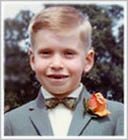An Illustrated History of Old Sutton in St Helens, Lancashire
Part 12 (of 95 parts) - Rev. Henry Vallancey, First Vicar of Sutton Church
Researched and Written by Stephen Wainwright ©MMXX Contact Me
Researched & Written by Stephen Wainwright ©MMXX
Old Sutton in St Helens
He was a respected man of the church who had sufficient clout to chide the great and the good when he felt they weren't coughing up enough cash for his community projects. This he did on 28th March, 1856 in a stern eleven page letter to chief Sutton landowner Ellen Hughes, the widow of Michael Hughes (I), which he prefaced with the words:
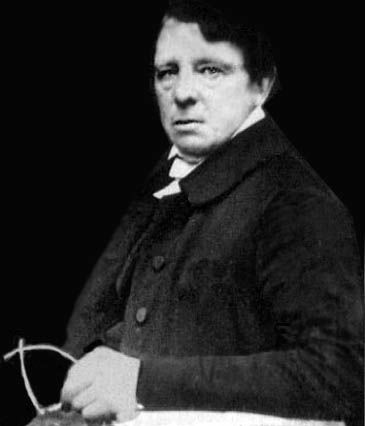
Henry Edward Francis Vallancey (1807 - 1888) came from a remarkable military family, who are worthy of some exposition here. His grandfather General Charles Vallancey (1731 - 1812) was born in Westminster, London on April 6th, 1731. He was the son of Francis Vallancé and Mary Preston who had married at the Chapel of the Royal Hospital, Greenwich on September 21st, 1724. After the death of Francis, Mary's brother John Preston arranged a commission for Charles in the tenth regiment of Foot. After serving in Gibraltar for seven years, Charles was posted to Ireland and joined the Corps of Engineers. Vallancey became Chief Engineer and was responsible for engineering many of the old fortifications of Ireland.
The famed General Vallancey also acted as a military surveyor and was a founder of the Royal Irish Academy with a keen interest in antiquarian writings as well as Irish folklore. It has been claimed that the general was the first practitioner of ethnology in his adopted home of Ireland. Henry's father was Colonel George Preston Vallancey (1747 - 1809) who fought in America during the American War of Independence with the rank of Lieutenant. He met General George Washington on November 12th, 1777 after the future first President granted him safe passage to Philadelphia. Despite an enemy status, his treatment by Washington is said to have been 'polite and noble'.
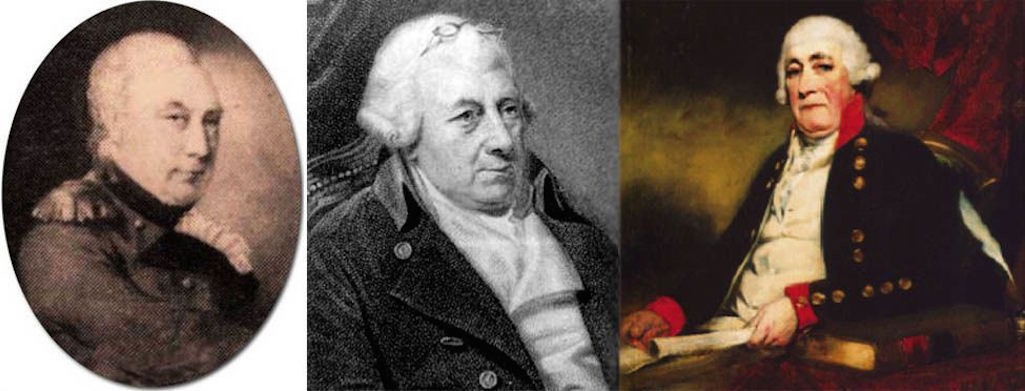
Left: Captain George Preston Vallancey; Right: Portraits of General Charles Vallancey military engineer and antiquary

Left: Captain George Preston Vallancey; Middle and Right: Portraits of General Charles Vallancey, a military engineer and antiquary

Left: George Preston Vallancey; Right: Portraits of General Charles Vallancey
It has been claimed that young Henry's first friends were the so-called 'mad' king's own children. Henry studied at Eton until 1827 and then at King's College, Cambridge up until February 27th, 1831 when he was ordained as a deacon at Buckendon by the Bishop of Lincoln. The Bishop of Chichester then ordained him as a priest in 1835 and Vallancey ministered in Norwich, Bricet and Wattisham in Suffolk and Rochford in Essex. From 1843 Henry Vallancey acted as chaplain to the first Bishop of Guiana (Guyana) and in 1849 arrived in Sutton to take up his post as the first vicar of Sutton parish, which he held until his death in 1888.
Although Henry turned his back on the army to serve God and Sutton, his brothers continued the family military tradition and served with distinction. Captain Richard Vallancey (1787 - 1867) was with Wellington during the Peninsular Campaign and was twice at Paris with British troops. Captain George Preston Vallancey (1806 - 1878) spent much time in India where he became Assistant Government Superintendent for the Suppression of Thuggee.
Vallancey was given responsibility to clear the Indian network of secret fraternities who were callously murdering and robbing travellers. It has been claimed that up to two million people were disposed of by the 'thuggs' who often used the yellow Rumaal scarf to strangle their victims after first befriending them. As a result of their activities, the word 'thug' entered the English language. Whilst in India, George married Harriett Garrett (1817 - 1858), a daughter of Sir George Garrett who was a member of a successful brewing family in Portsmouth. In 1796, Henry Garrett, Sir George's younger brother had married Mary Raikes, whose father was Sunday School Movement founder Robert Raikes (1736 – 1811).
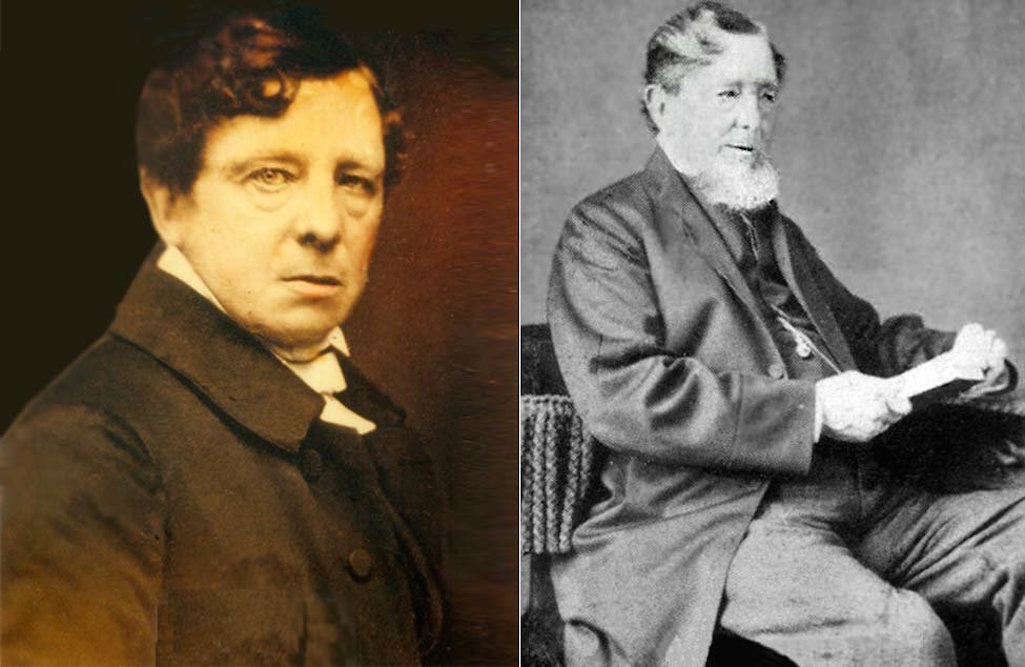
Two photographs of Rev. Henry E. F. V. Vallancey, who was the first Vicar of Sutton Parish Church

Two photographs of Rev. H. E. F. V. Vallancey, the first Vicar of Sutton Church

Two photos of Rev. H.E.F.V. Vallancey
Whether Captain George was aware that his bachelor brother who had officiated at the baptism was a parent himself - indeed grandparent by this time - will never be known. It seems to have been a closely guarded secret that in 1831 Henry Vallancey had become a father to twin boys by his then housekeeper. This was also the year of Henry's ordination and probably this fact and the couple's different social stations in life made marriage impossible.
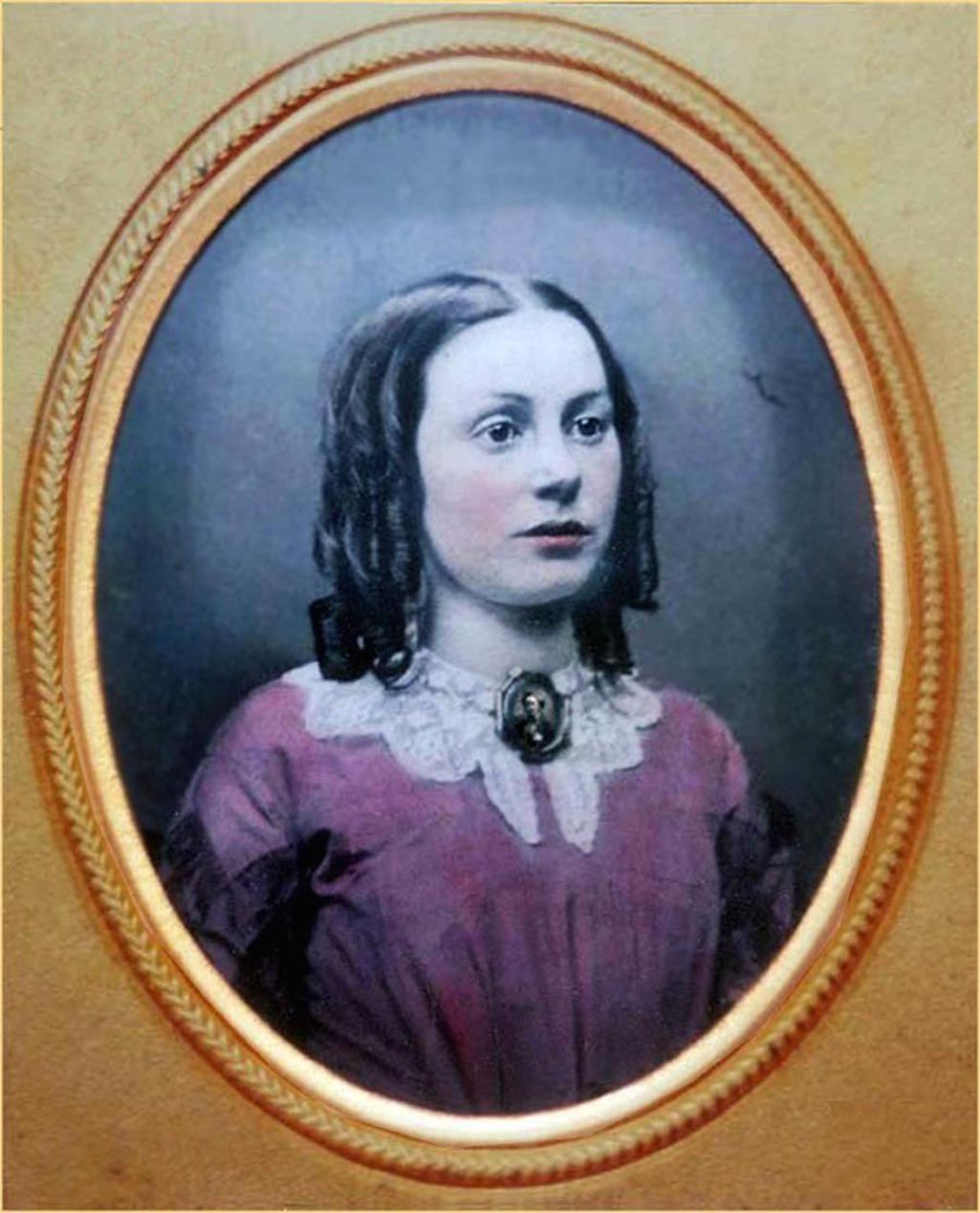
A Deguerreotype photograph of Mary Roberts née Bradshaw (1836 - 1859) - Contributed by Frank Jones

A Deguerreotype photograph of Mary Roberts née Bradshaw (1836 - 1859)

Mary Roberts née Bradshaw (1836 - 59)
Mary and Fredrick had two sons, Fredrick Henry and William Thomas and Henry Vallancey baptised both of them at his Sutton church (on 30/9/1857 & 31/12/1858 respectively). These must have been difficult experiences for him as he could not publicly reveal that they were his own grandchildren and William's baptism was conducted in the middle of the night.
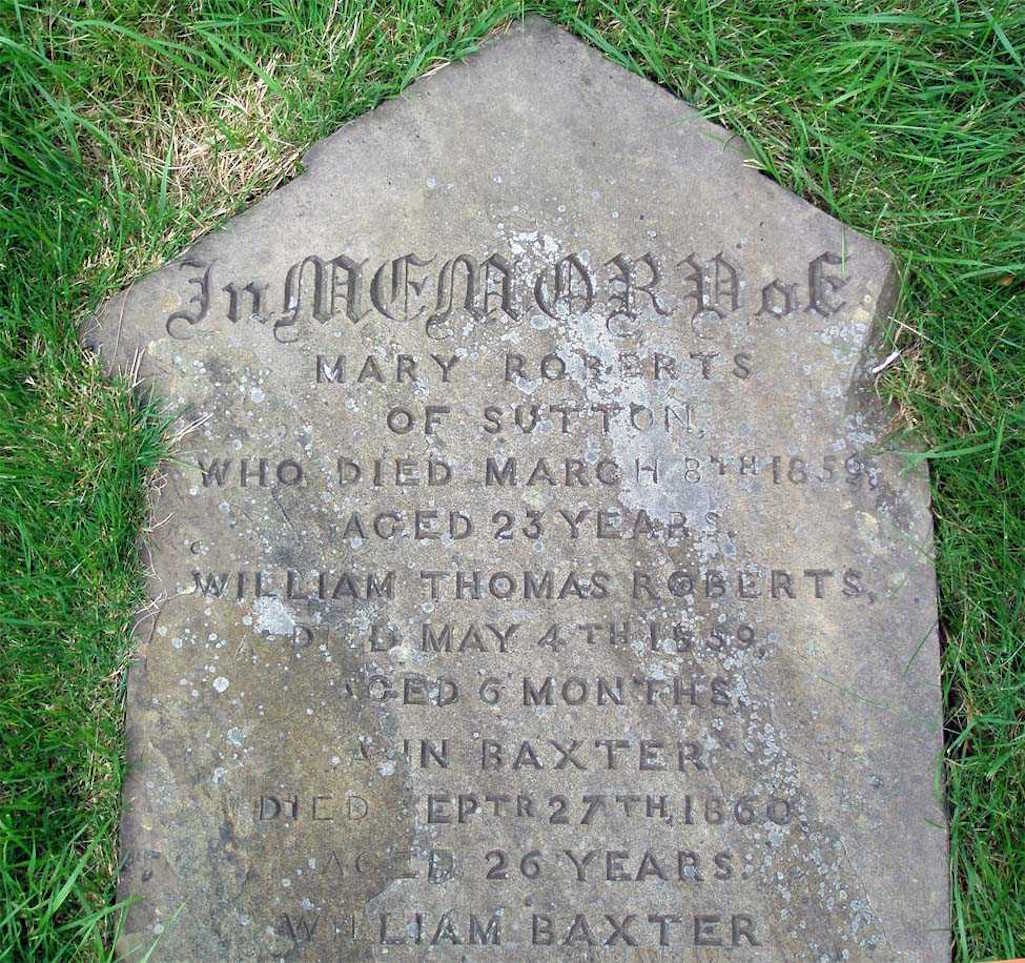
Mary Roberts and child William's grave at St.Nicholas - her sister Ann and brother-in-law William Baxter are also buried there

Mary Roberts and child William's grave at St.Nicholas Church graveyard - her sister Ann and brother-in-law William Baxter are also buried there

Mary Roberts' grave at St.Nicholas
Frank Jones is the grandson of Fredrick Henry (who in 1871 was living at 69 Robins Lane) and has told this website how his grandmother would refer to Rev. Vallancey as "the old devil". However, the longstanding Vicar of Sutton clearly had a soft spot for members of his family, even if he wasn't able to publicly acknowledge them. Mary's sickness and death seems to have hit him very hard as he used to wear an 'in memory' medallion with her picture within it. This is now in Frank's possession as well as a number of original Daguerreotype family photos.
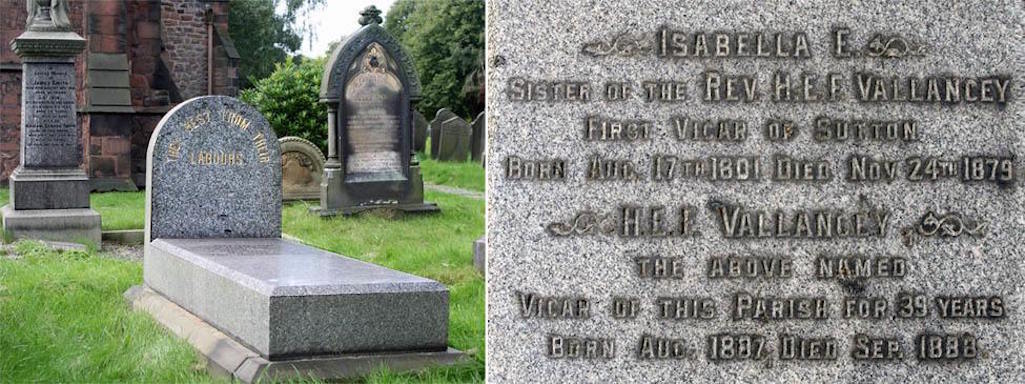
Rev. H.E.F. Vallancey's grave at the front of St.Nicholas Church in Sutton which includes sister Isabella

Rev. H.E.F. Vallancey's grave at the front of St.Nicholas Church in Sutton

Rev. Vallancey's grave at St.Nicholas
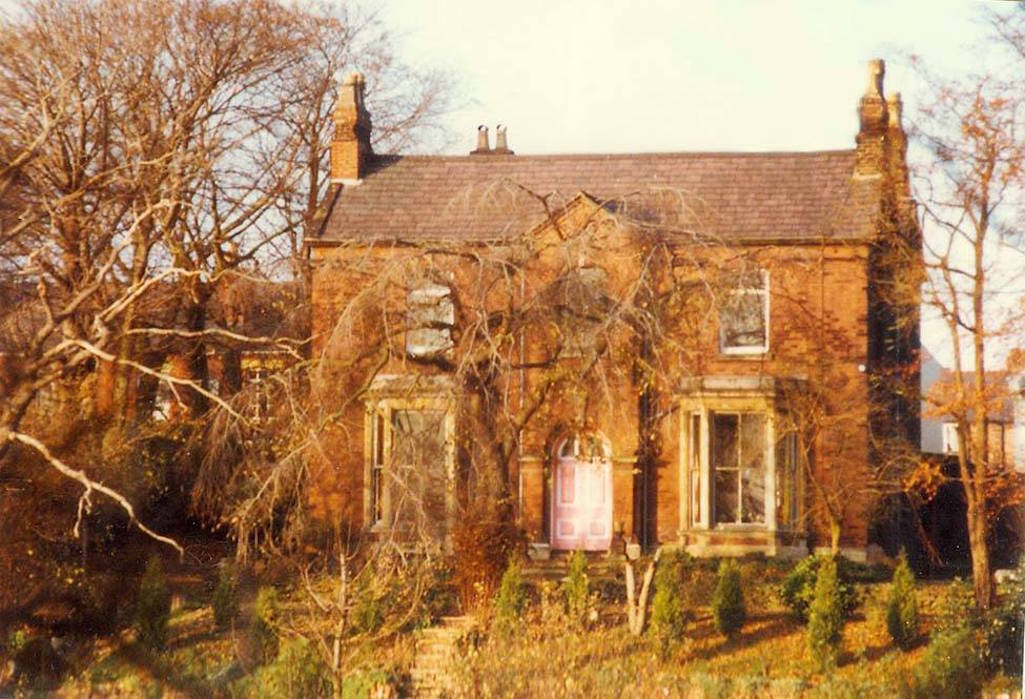
Millersdale in Mill Lane, the former home of Rev. Henry Vallancey - contributed by Frank Jones

Millersdale in Mill Lane, which was the former home of Rev. Henry Vallancey

Millersdale, Vallancey’s former home
Henry Vallancey died on September 19th 1888 aged 82 and thirty-nine years after first arriving in Sutton. He'd been in ill-health for some time and in 1883 the Bishop of Liverpool had appointed Rev. Gibson Rowning as curate-in-charge of the Sutton parish.
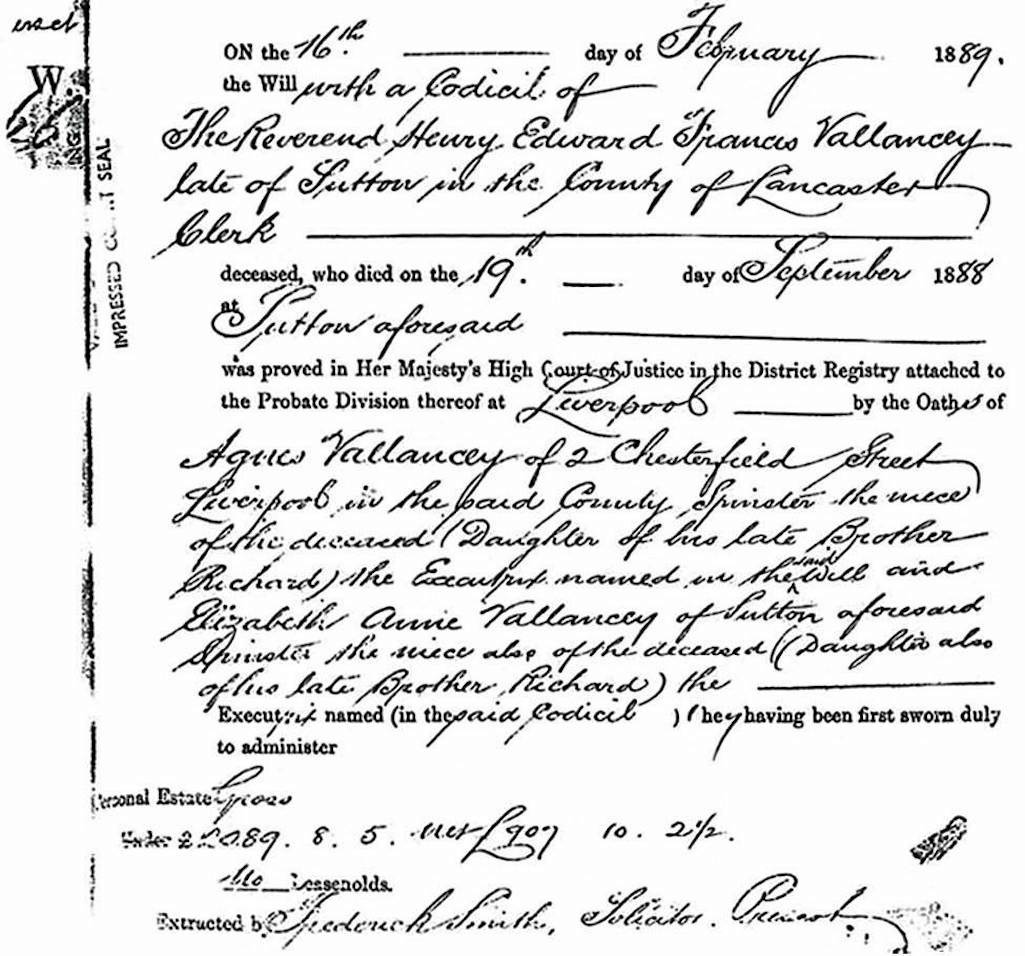
Henry Vallancey's will with gross estate valued at £2089 8s 5d, around £170,000 in today's money - contributed by Frank Jones

Vallancey's will with estate valued at £2089, around £170,000 in today's money

Rev. Henry Vallancey's will with gross estate valued at £2089 8s 5d.
